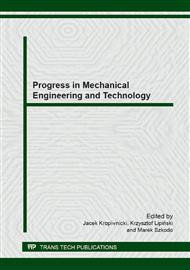p.29
p.37
p.45
p.51
p.63
p.77
p.87
p.99
p.107
Effect of Surface Roughness on Thermal-Hydraulic Characteristics of Plate Heat Exchanger
Abstract:
In the paper the experimental analysis of passive heat transfer intensification in the case of modeled plate heat exchanger is conducted. The plate heat exchanger is chosen for the analysis because this kind of heat exchangers could be prospectively applied in the ORC systems, however other areas or application are equally possible. The experimental set-up was assembled at the Department of Energy and Industrial Apparatus of Gdansk University of Technology. The passive intensification was obtained by a modification of the heat transfer surface. The roughness of surface was increased by use of glass shot.During the experiment single-phase convective heat transfer in the single phase system was studied. The experiment was done in two stages. In the first stage the model of commercial plate heat exchanger was investigated, while in the second stage the identical one but with modified heat transfer surface. Model of heat exchanger consisted of three plates. The direct comparison of thermal and flow characteristics between both devices was possible due to assurance of equivalent conditions at the inlet to the system.The thermal and hydraulic characteristics are presented. The thermal analysis shows that in some range of heat flux density the overall heat transfer coefficient was higher for the commercial heat exchanger, while for the other was higher for the heat exchanger with modified surface. The influence of larger roughness on heat transfer cannot unequivocally be evaluated. Therefore as the next step the systematic investigations of model heat exchangers (only with one hot and one cold passage) will be conducted.
Info:
Periodical:
Pages:
63-74
Citation:
Online since:
December 2013
Authors:
Price:
Сopyright:
© 2014 Trans Tech Publications Ltd. All Rights Reserved
Share:
Citation:


